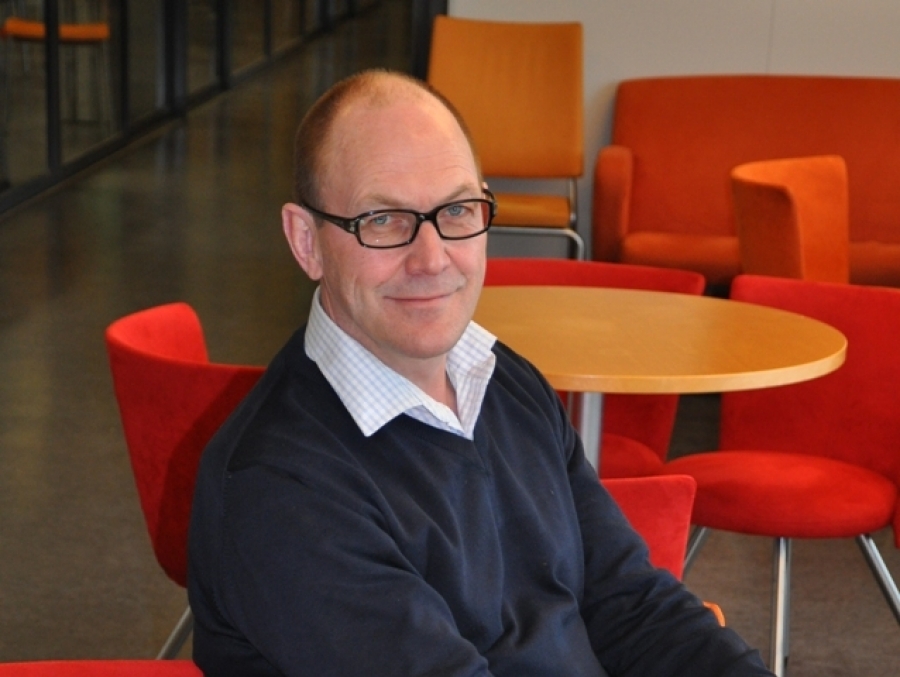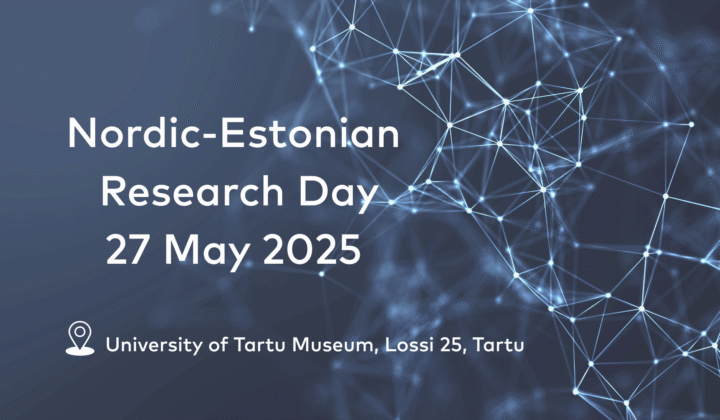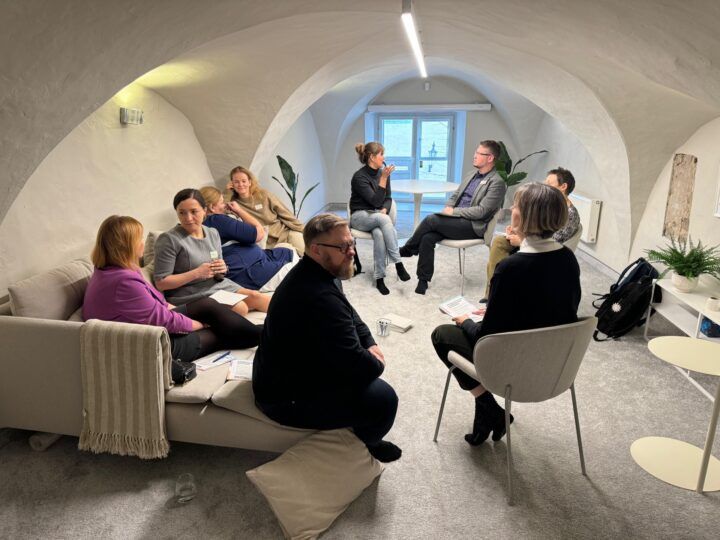Berth Sundström: Skilled workers are worth their weight in gold to all countries

“Approximately 200,000 people have left Estonia since the country regained its independence,” write University of Tartu professors Tiit Tammaru and Raul Eamets and Allan Puur from the Estonian Institute for Population Studies in Eesti Päevaleht on 5 March. Considering the small population of the country, the low number of births, the rapidly aging population, the simultaneous lack of work and workforce, urbanisation and the increasingly frequent and tragic stories about social problems caused by extensive emigration, concern is understandably spreading among Estonians: what will happen to us?
Every person, a specialist in their chosen area, is highly valued in a globalising Europe which is plagued by economic stagnation and aging. These people contribute to the development of a country’s economy and society.
Cooperation between the Nordic countries and Baltic States has grown every year since Estonia, Latvia and Lithuania regained their independence. When the Nordic Council of Ministers opened an office in Tallinn in spring 1991, their cooperation was mostly about the Nordic countries helping Estonia. In just twenty years, this one-sided arrangement has developed into a partnership in which the Nordic countries also have a lot to learn from their progressive neighbours. More and more of the surrounding world is talking about the Nordic and Baltic countries together.
In addition to import and export indicators, their highly integrated relationships are also obvious in migration statistics. Traffic between Finland and Estonia is particularly busy due to the geographic and cultural closeness of the two countries. The economic and social gap between the countries caused by history, the labour shortage in Finland and the recent recession have promoted the movement of people and workforce between the two countries. However, it is important to remember that the movement between Estonia and Finland has occurred in both directions and in the interests of both countries.
All three Baltic States are having to deal with extensive emigration and an ever-older population. This aging populace, the decrease in the number of taxpayers, the need to increase the pensionable age and the model of a welfare state with high expenditure have been hot topics in the Nordic countries for years. In addition to this, the Nordic countries are also having to cope with extensive immigration, as well a new problem: increasing unemployment among young people. For example, the average age of a young person who entered the labour market in Sweden in 1980 was 23; this figure had grown to 29 by 2010.
The Nordic countries and Baltic States have many common success stories, concerns and, above all, people. The need for cooperation is obvious. Workers from the Baltic States are held in high regard in the Nordic countries; you might say that they are using the best and brightest people from Estonia, Latvia and Lithuania to solve their problems. True, the fact that medical professionals who have received a good education and gained experience in Estonia are leaving the country is a concern that has to be addressed if emigration from Estonia causes problems in the quality and accessibility of treatment in the country.
However, free movement of people is one of the fundamental rights of the European Union. It gives people the freedom to study, work, establish a family, foster their skills and broaden their horizons in other countries. We all want to enjoy this freedom of movement; the freedom to decide and act is one of the sweetest fruits for the Baltic States since they regained their independence. Or is this not the case? Maybe setting obstructions to protect one’s own interests and highly educated workforce is the solution?
The Nordic countries have chosen a different path. Tens and thousands of people, workers, have been moving between Finland, Sweden, Norway, Denmark and Iceland for decades. This has been promoted by cultural and geographic closeness, but also recession and unemployment in one or another country. It is natural for people to want to make a better living, and a familiar cultural space makes adapting to life in another country easier.
Instead of establishing borders, the Nordic countries decided to open them on the labour market – they have had a common labour market since the 1950s. Students and companies also move freely across borders in addition to workforce. Openness is necessary to maintain a balance between the countries. One struggles with unemployment, the other with labour shortage. Also, these countries are each other’s main import and export markets, which is why economic balance is in everyone’s interests.
Openness did not mean that people, services and goods could immediately cross borders without any obstacles. Moving the obstacles that obstruct free movement has been one of the hottest issues for Nordic governments and parliaments over the last fifty years, and there is still a lot of work to do. Free movement means harmonisation of views and laws so that everyone benefits from it. These states have had to adjust their tax and pension systems, benefits and more.
How is free movement expressed in economic indicators? The Öresund region is a success story. The Öresund bridge between Copenhagen and Malmö opened in 2000. 2600 people moved between the two every day before the bridge opened, but by 2011 ca 18,000 lived on one side and worked on the other. Most of them live in Sweden and work in Denmark: 40% are Swedish, 37% are Danish and the remainder are immigrants.
These people contributed 5.5 million DKK to the economic growth of Denmark in 2010, and the total benefit generated by these people since the bridge opened is 33 billion DKK – meaning the bridge has repaid itself.
On the Swedish side, unemployment has decreased and Sweden saved 1.3 million DKK on unemployment benefits in 2010. Additional workforce also benefits Denmark, which used to suffer from a labour shortage. People are earning income, consuming more, sending money to people back home, developing themselves further and broadening their horizons, and becoming more competitive – this is the plus side of migration.
However, openness does create some problems that need to be solved. There are and always will be people who are not satisfied with the situation.
Coming back to the closely connected Nordic and Baltic countries, it should be said that the concerns of one country influence the others, as nobody is interested in increasing social instability. Even development in the Baltic Sea region boosts everyone’s economies and increases the feeling of unity, as shown by the experience of the Nordic countries. It is obvious that there is a need for closer cooperation and information exchange. Keeping valuable skilled workers in our region is in everyone’s interests.
In order to ensure sustainable development and solve common concerns, the Nordic Council of Ministers launched a project that aims to obtain an overview of migration flows and demographic developments in the Nordic countries and Baltic States. The first step we took was to organise the ‘Migration and Demographic Challenges in the Nordic-Baltic Region’ conference with the help of the University of Tartu, the Swedish Embassy in Tallinn and other partners.
Migration is a dynamic process about which there is a lack of information and cooperation between research establishments and in regard to which a common policy could be adopted in terms of population change in the Nordic countries and Baltic States. We hope that we and the specialists and experts from Estonia, Sweden, Finland, Norway, Denmark, Latvia and Lithuania can give the data to decision-makers so that they can make decisions that are smart and based on facts, and serve the interests of individuals, our countries and the entire region.
This article was published in Postimees on 8 March 2013 (in Estonian). The Nordic Council of Ministers’ Office in Estonia, the University of Tartu, the Swedish Embassy in Tallinn and other partners organised the international ‘Migration and Demographic Challenges in the Nordic-Baltic Region’ conference, which was held in Kumu Art Museum in Tallinn on 7 & 8 March 2013. Read the text of the presentations made at the event here.


